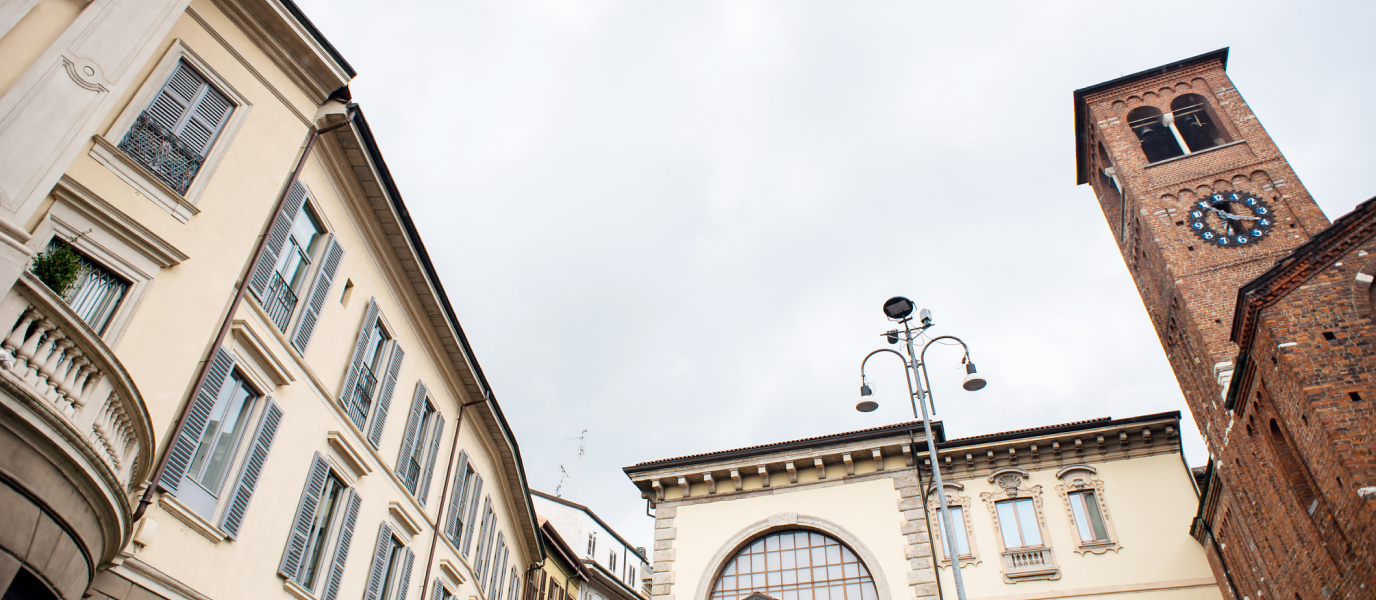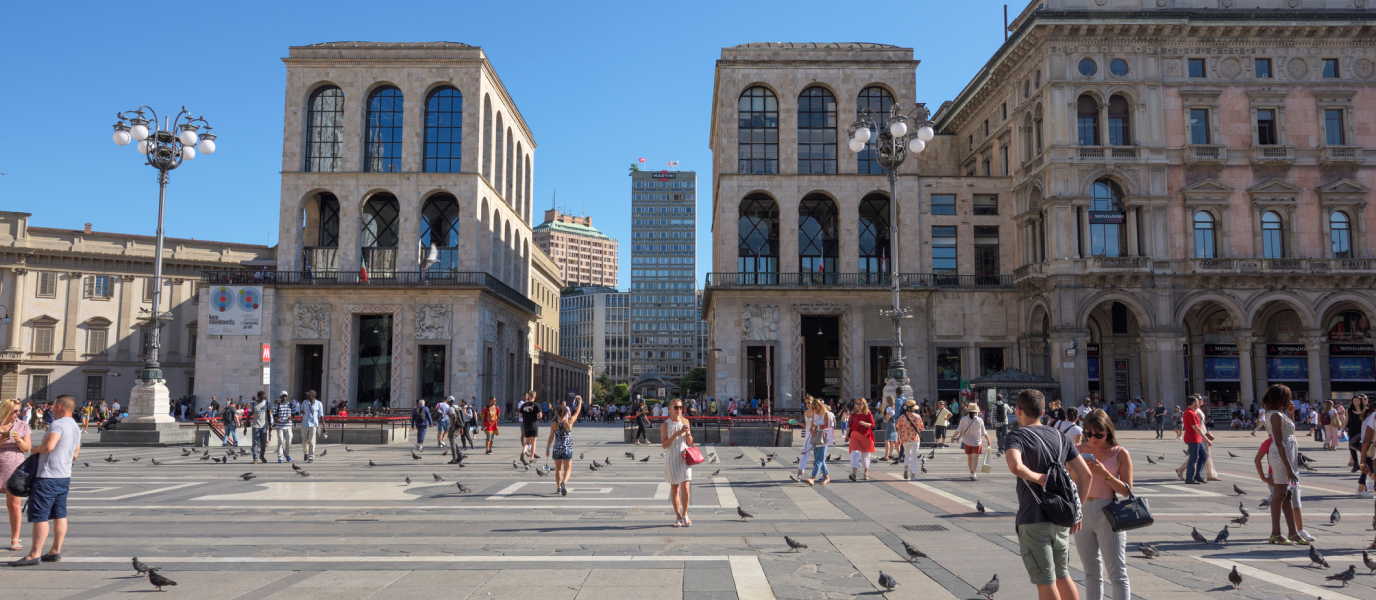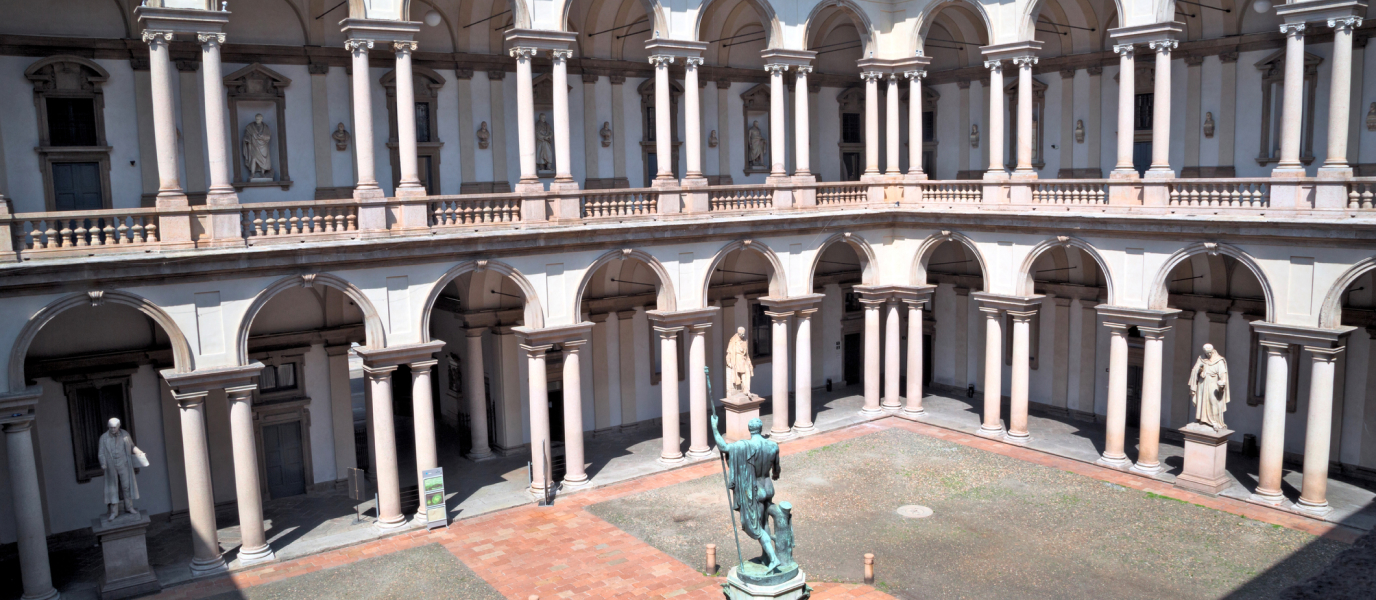Every museum in Milan is home to more than one treasure, as the most famous Italian artists of all time have lived here. The city’s historic centre is a genuine hotbed of art.
If you find yourself in the magnificent Piazza del Duomo visiting the Cathedral and the Royal Palace, don’t forget to head towards Piazza Pio XI, just a five-minute walk away. This is the place chosen to build the Pinacoteca Ambrosiana, one of the most beautiful galleries in Milan, where all those in awe of Leonardo da Vinci, Titian, or Caravaggio will get a good dose of their brushstrokes.
From the Biblioteca to the Pinacoteca Ambrosiana in Milan
Cardinal Federico Borromeo was an important Milanese humanist who in 1607 decided to set up an institution for culture and study. Accordingly, in December 1609, the Biblioteca Ambrosiana, named after Saint Ambrose, the patron saint of Milan, opened its doors. The intention was to guarantee free cultural access to anyone who wanted to learn.
It’s one of the oldest libraries in Europe and its collection is among the most important in the world. It now contains over one million volumes including incunabula, manuscripts, drawings, prints, and unique rare items.
Borromeo’s original intention was for this library to serve as a source for Counter-Reformation scholars, but it became a genuine temple of wisdom. It can boast among its acquisitions the famous Codex Atlanticus by Leonardo da Vinci.
As the years went by, the number of works increased and the cardinal decided to extend the library with a new building, the Pinacoteca Ambrosiana. This building was opened in 1618 and served to house the works that Borromeo himself had donated from his private collection.
The approximately 250 pieces donated by the Cardinal were joined by later donations: paintings by important artists from Lombardy of the 17th, 18th, 19th, and 20th centuries. Today, the 24 rooms of the Pinacoteca Ambrosiana offer a complete chronological journey through Italian art.
The legacy of Federico Borromeo is currently complemented by the creation of the Accademia Ambrosiana, where ancient languages and cultures are studied. A space dedicated to knowledge and dialogue between students from all over the world.
Main works of the Pinacoteca Ambrosiana
The complex of buildings that now house both the Biblioteca and the Pinacoteca Ambrosiana have undergone several restorations throughout their history. Severely damaged by bombings during World War II, the last renovations were carried out at the end of the 20th century to ensure that the exhibition spaces were in the best possible condition.
As you walk through the different rooms that make up the Pinacoteca Ambrosiana, don’t forget that there are some masterpieces among its collections that you can’t miss:
- Botticelli’s Madonna of the Pavilion. One of the undisputed protagonists of the Italian Quattrocento, this is a unique circular panel or tondo dating from 1493. The most characteristic features of Botticelli’s extraordinarily beautiful, serious, and somewhat distracted virgins can be seen in this piece in which Mary is depicted as a Nursing Madonna.
- Portrait of a Musician by Leonardo da Vinci. Thanks to this painting, you’ll have the chance to see the only male portrait that Leonardo painted in his entire career. Dated around 1485, da Vinci’s brushstrokes are clearly recognisable on the figure’s face, although it’s possible that the clothing and other details were added later. It was during a 20th century restoration that the hand and the musical score were discovered. There are still many mysteries surrounding this painting and many experts are still trying to find out who this man was.
- Cartoon of Raphael’s The School of Athens. Undoubtedly one of the main stars of the Pinacoteca Ambrosiana is this preparatory cartoon painted by Raphael in 1509. It’s the preliminary sketch for the marvellous School of Athens in the Room of the Signature at the Apostolic Palace in the Vatican. Measuring almost eight metres in length, it’s the largest surviving cartoon from the Italian Renaissance. It’s a fantastic opportunity to see the changes that Raphael made between the sketch and the final work.
- Basket of Fruit by Caravaggio. One of the most beautiful still lifes by the master of tenebrism is also preserved within the walls of the Pinacoteca Ambrosiana. Caravaggio painted this canvas between 1597 and 1600 and although at first glance it seems simple, you only have to look for a moment to realise that these fruits are full of wormholes. Did the artist simply paint the elements at hand or did he want to symbolise the passage of time? Whatever the case, the strong sense of realism displayed in this painting won’t fail to impress you.
The Adoration of the Magi by Titian, Portrait of a Lady by Ambrogio de Predis, and Saint John the Baptist by Gian Giacomo Caprotti are also among the thousands of works in the gallery.
You’ll also find a large collection of copies of famous Renaissance paintings. Cardinal Borromeo encouraged the making of these copies for educational purposes. Among others, there’s a replica of Leonardo da Vinci’s “The Last Supper”.
There’s also no shortage of rare objects, such as the gloves worn by Napoleon at Waterloo or a lock of hair that belonged to Lucrezia Borgia and which for years attracted the likes of Lord Byron in search of a little inspiration.
You can’t leave this area without entering the Biblioteca Ambrosiana. The special atmosphere and the smell of old books will captivate you as you pass by the display cases. The Codex Atlanticus is one of its most valuable possessions, over 1,000 pages in which you can see Leonardo’s ingenuity in his own handwriting.
The Muratorian fragment, De divina proportione, written by Luca Pacioli and illustrated by da Vinci, as well as the famous Codex Virgilianus that belonged to Petrarch and on which his dear friend the painter Simone Martini painted a valuable miniature, or the amazing engravings kept in the Biblioteca Ambrosiana will make you understand why even the novelist Mary Shelley visited it during her trip to Milan.
Useful information
Address: Piazza Pio XI, 2, 20123, Milan.
Website: https://www.ambrosiana.it/en/
How to get to the Pinacoteca Ambrosiana:
- By underground: lines 1, Duomo and Cordusio stop; line 3, Duomo stop.
- By tram: lines 2, 3, 12, 14, and 16.
Opening hours.
The Pinacoteca Ambrosiana is open from Tuesday to Sunday from 10 a.m. to 6 p.m. The Biblioteca Ambrosiana is open from Monday to Sunday from 9 a.m. to 5 p.m.
Price.
Check the current admission price on the official website of the Pinacoteca Ambrosiana. The Biblioteca is freely accessible, provided that you sign in and respect the rules established for the space.







































































